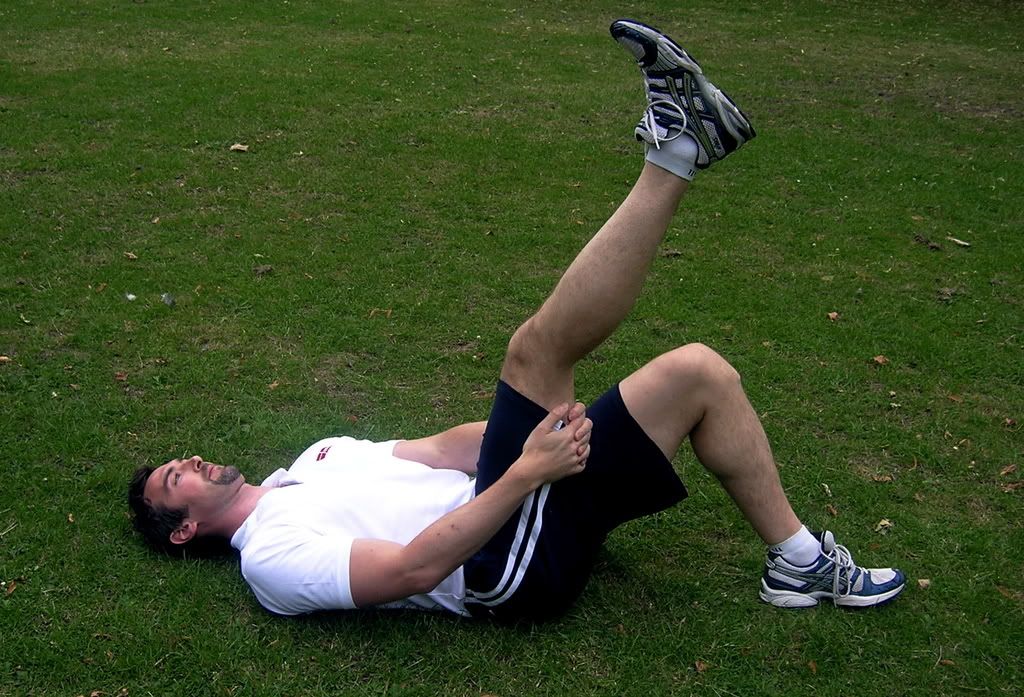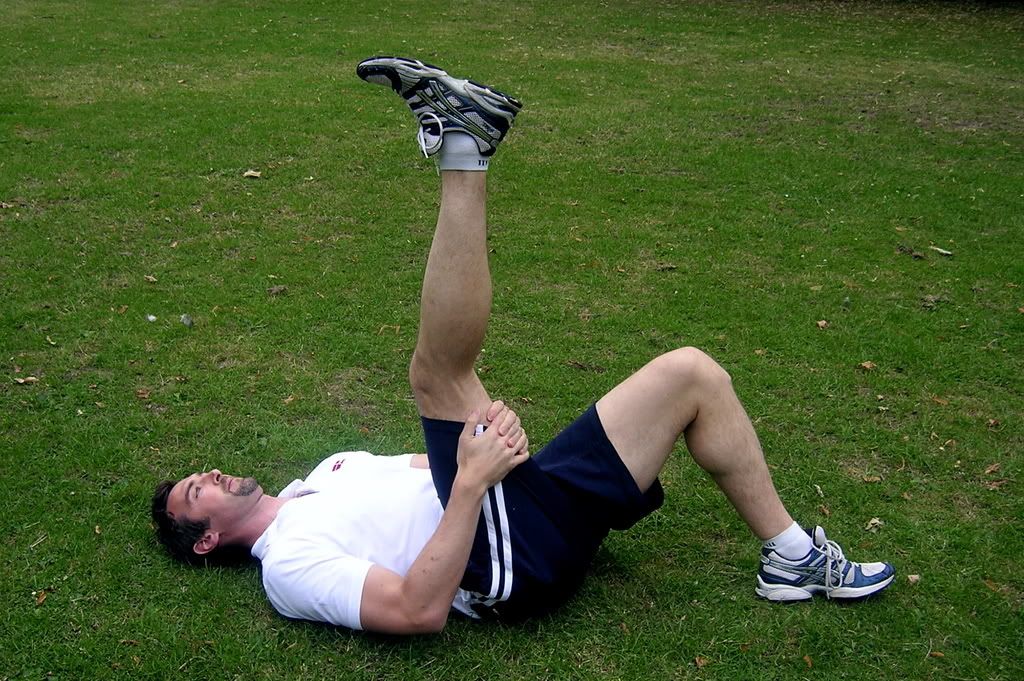A common reason for suffering minor injuries is not taking enough time to stretch as part of your regular fitness routine.
I know what you'll say - stretching is boring and it doesn't burn calories or body fat. Well, think about it this way instead.
1) If your workout is effective, your metabolism will be running fast for a good 30-60 minutes following your activity so if you stretch during this period, you'll be burning calories while you stretch.
2) If you pick up even a small injury that puts you out of action you definitely won't be burning many calories for a while. You only need a little bit of stretching in your routine but if you do it regularly you will be able to keep up your programme without interruption and make sure that your results keep on coming week after week after week.
Here are a couple of simple stretches to get you started. Try doing these right now to practice and at the end of your next workout.
For all stretches, move gently into position, hold the stretch for 10 seconds and then release gently. Think about where you feel a stretch and what you might need to adjust if you're not feeling it where the stretch is intended to work.
Calves
The lower legs can take a battering, particularly if you walk, run or use an incline a lot. Wearing heels also makes these muscles short and tight so avoid wearing them too often and do this stretch once you take them off.
Here's how to keep them loose.

Lean into a wall and extend one leg out behind you
Keep your toes facing forwards
Put most of your weight on the front leg and push the heel of the back leg into the ground
If you need to increase the stretch, step the back leg out a little further and repeat the move
Swap and repeat on the other leg
Hamstrings
The backs of the thighs spend a lot of the time in a shortened position as we sit down on them all day. Tight hamstrings can lead to lower back pain in the long term so make sure you stretch this area regularly.


Lie down face up with your knees bent and feet flat
Extend one leg above you
Grab the back of the thigh of the extended leg and then pull it towards you
Make sure you keep a slight bend at the knee
Note - the straighter the leg above you, the more you feel the stretch behind the knee, which can be painful. Bend the knee a little to keep the stretch right in the middle of the back of the thigh
Swap and repeat on the other leg
I'm awful when it comes to stretching even though I know there are benefits. Stretching is something I will need to improve on. Thanks for the tips. =)
ReplyDeleteStretching is always an interesting topic.
ReplyDeleteThere was research conducted out of the University of Tampa back in 2002 that addressed whether pre and post-exercise stretching affected muscle soreness and the risk of injury.
This research was a compilation of 5 studies, with the focus being on military recruits. The data on stretching and muscle soreness indicated that, on average, individuals will observe a reduction in soreness of less than 2 mm on a 100-mm scale during the 72 hours after exercise. With respect to risk of injury, the combined risk reduction of 5% indicates that the stretching protocols used in these studies do not meaningfully reduce lower extremity injury risk of army recruits undergoing military training.
Most of the physical benefits of a warm up (increased blood flow to the muscles, enhanced metabolic reactions, reduced muscle viscosity, increased extensibility of connective tissue, improved conduction velocity of action potentials, etc.) are obtained during the first few repetitions of an exercise. As such, for my warm-ups I usually focus on a few of the core exercises I’ll be performing. For example, a typical warm-up may include:
- 10 prisoner squats
- 10 push-ups
- 10 stability ball knee curls
Train hard; stay strong.
Susan
www.catapultfitnessblog.com